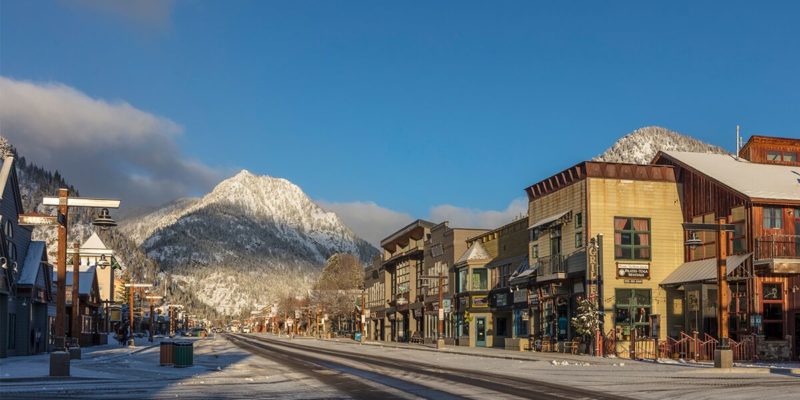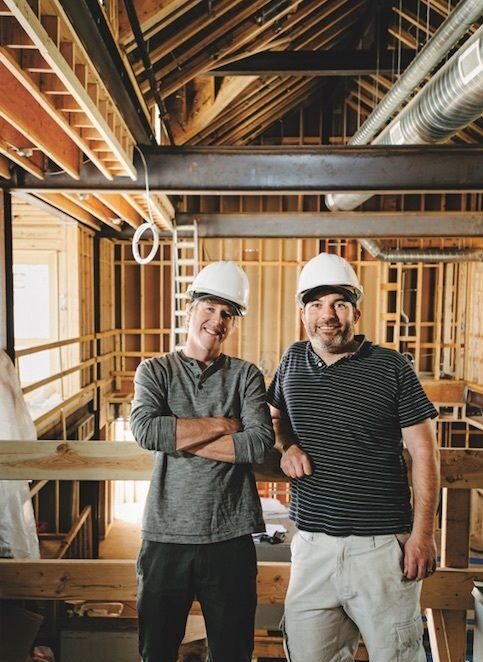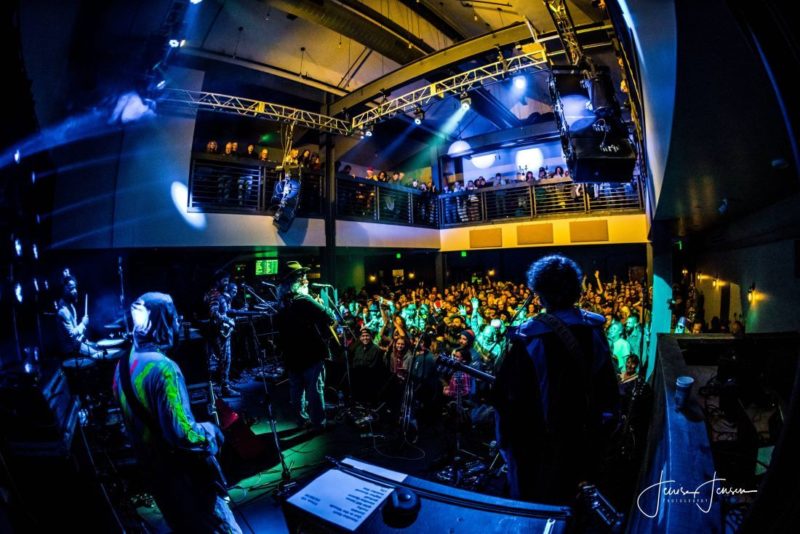“Wouldn’t you love it if your [town] was famous for music?” Dave Grohl of legendary bands Nirvana and the Foo Fighters asked city leaders as the headliner of last year’s CityLab DC.
Grohl remembers the “little cultural biodome” that was 1990 grunge-era Seattle, where local mid-sized music venues, like the Showbox Theater and the Crocodile Cafe, gave grunge acts, Nirvana, Soundgarden, and Alice and Chains an avenue for community, identity, and expression. These cultural hubs helped transform a once sleepy town into a brand-name music city and cultural phenomenon.
Today, the merits of live music venues have entered the day-to-day conversations of urban economists, planners, licensers, and tourism experts as vibrant cultural spaces, hubs of innovation, and placemakers. But, in the shadow of large urban centers like Seattle, small cities and rural towns receive less attention for their ability to cultivate vibrant music economies in their communities. So, I took a closer look at the community–building power of small–town grassroots music venues in my own backyard, throughout the state of Colorado.
Music Needs a Home
As a lover of live music and Team Leader for HeadCount.org, I have experienced a wide array of this Rocky Mountain state’s energetic music scene—from large arenas like 1st BANK Center in Broomfield and the iconic Red Rocks Amphitheater in Morrison (both outside of Denver) to Telluride’s Sheridan Opera house.

What I’ve discovered is that the live music venues in small cities and rural towns throughout the state serve as a vivacious cultural hub for their communities—just as their urban counterparts do. In fact, one town that has quickly cultivated their music scene is the small mountain town of Frisco.

Having opened in the fall of 2018, Frisco’s 10 Mile Music Hall is the vision of co-owners Todd Altschuler and Keegan Casey, who together previously managed Frisco’s Barkley Ballroom. According to Altschuler, ticketed shows and bigger headliners were doing extremely well considering the Barkley’s 325 capacity, so they decided to take things up a notch. But they needed a bigger room to do that. And with max capacity at 650 people, 10 Mile presented the perfect opportunity in the heart of Frisco.
“Not to say that small venues like 10 Mile could ever be Red Rocks, but it’s a different kind of environment that people can remember,” explains Altschuler.
“For example, I went to the first Oysterhead show [in 2000] at the Saenger Theatre. And it was an amazing experience at the Saenger because there were more people outside trying to get in the show than there were inside the show. Now, Oysterhead is reuniting for a 2020 tour and they’re selling out big arenas like 1st BANK.
So, my thought is, if you get to see a band at a smaller place—like my first experience of Oysterhead in a 2,000 seat theater—that’s legendary. And hopefully [10 Mile] will be in the same boat someday.”
Altschuler and I continue the conversation as we look at the economic, cultural, and social significance of grassroots music venues in small towns like Frisco. We’ll present 5 tips on how to turn your town or small city into a vibrant music hub—
1. Location & Building Design Matter

As for 10 Mile, the development was a result of a partnership between the person who owns the former vacant lot at 710 E. Main St, Altschuler, and Casey. The venue is roughly 8,000 square feet with vaulted ceilings that reach up to 33 feet at its peak. There is a large dance floor and bar on the ground level that commands attention to the focal point—the stage, of course—with a wraparound balcony on the upper floor that includes a second bar. The upper floor has two side-by-side, garage-style sliding doors, connecting the upstairs balcony to one of the largest rooftop decks in Summit County. The design of the space, itself, is an experience.
2. Community Support is Key

A widespread challenge for the music industry is to convince community members, policymakers, politicians, and other industries of the wider economic benefits of music. This limits the industry’s ability to gain a seat at the decision-making table and to garner local financial and policy support. As Altschuler points out, 10 Mile luckily had a lot of community support in its early stages, so there weren’t many obstacles in the development of the site.
However, if you are a part of a community where this is not the case, one strategy is to host a high profile music event that can provide a convincing demonstration of music’s benefits in your town. Another strategy is to partner regionally with music industry heavyweights. That way, music stakeholders are under a unified umbrella and you will gain greater legitimacy, as well as the ears of other key business and government stakeholders.
3. Cultivate Local & National Visibility (aka Big Headliners)

Being noticed locally and nationally as having a vibrant music scene creates a “cool” factor and a quality of life that makes people want to visit, live, and work in your town. As the largest venue of its kind outside of Colorado’s Front Range Urban Corridor, 10 Mile has exploded on the music scene with a series of sold-out shows. Since opening last fall, the venue has attracted large headliners such as The Disco Biscuits, Leftover Salmon, and Twiddle (to name a few), bringing a significant amount of visibility to the Town of Frisco.
According to Altschuler, every time they announce a show, the city’s social media, website, and lodging metrics sky rocket. But, the big headliners that 10 Mile is able to attract is largely due to its proximity to some of the nation’s top ski resorts and it’s 75-minute drive from the state’s largest urban center. This makes the venue attractive to both artists and fans as a destination music experience. For rural communities that don’t have these nearby assets, to attract larger headliners, one strategy is to collaborate across the different segments of your music community, including local artists, record stores, record labels, and other music-related businesses.
Further, Frisco’s budding music scene has attracted local business investment. This gives the small town an edge in retaining talent—not only for those who work in music, but for professionals in a variety of fields. For many cities, putting their best foot forward to attract well-educated and talented young professionals is a major challenge in an environment of intense national and global competition. But, music can be a big part of recruiting and retaining an array of skilled-workers. Especially, young workers for whom quality of life is a priority.
4. Partner with Regional Tourist Attractions

Music tourism benefits cities to the tune of billions of dollars every year. Like in Frisco, when tourists travel to experience live music, whether a music festival, concert, or a favorite band in an intimate venue, they will spend additional money on lodging, restaurants, bars, and other local attractions.
Already, 10 Mile is carving out its niche as a destination concert venue. With Copper Mountain (7 minutes), Breckenridge (15 minutes), Keystone (20 minutes), and Vail (30 minutes) located just down the road, the venue is able to develop partnerships that strengthen the region as a healthy and vibrant business environment. One example is its partnership with Copper Mountain, hosting multi-day music-and-ski festivals, like Deadhead Ski Trip and SkiDM. Copper offers the venue group sale discounts, which they pass along to their artists.
“So, if a band wants to come and play here three nights, even though they get to usually play much bigger venues—they get to ski. And we get to throw a party with their fans,” Altschuler explains.
Altschuler provides an example by saying, “I’m just going to throw Twiddle out there. A lot of their fans come from the Northeast. Tickets are usually $175 a day to go skiing at Copper Mountain. So, we’re able to say, ‘you’re coming out [to Frisco], your three-day ticket is this much, and on top of that you get two days of skiing for only $150 extra dollars.’” Collaborations like this are an effective means of gaining support from industry leaders and music fans and can lead to significant improvements to the regulatory and business environments of your town.
5. Be Cautious Not to Cut Corners

Based on your city or town’s current climate and culture, your business plan can ensure that your goals (and your community’s goals) are realistic. If you have a hard time creating a vision and a plan that reflects the attitudes and feelings of your town, reading and understanding your history of development can help you identify past challenges and what changes you might like to see.
Altschuler stresses to “[not] cut corners, and make sure that you really have the business part of it, too. There is a lot of beauty in just following your dreams, but you can’t do it without having a plan—and more than just a vision.”
Make Your Music Community Stronger Than Ever
Successful music hubs throughout the world share many of these strategies, but it’s nearly impossible to transplant all of these practices from one town to another. Local circumstances, including socio-economic indicators, political priorities, and strengths and weaknesses of the local music community must be taken into account. But this is where small towns and cities can get creative and discover what works best for them.
It is my hope that these tips inspire you to build a music hub in your community and to make your music community stronger than ever!
Community
|
Economy
|
Land Use

